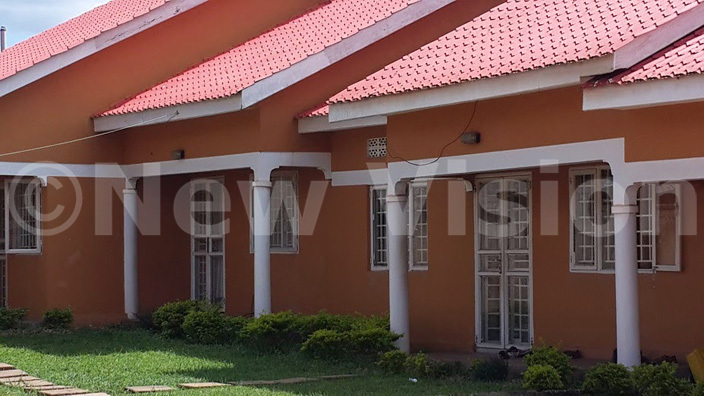Bweyogerere: The home of Ugandan soccer
Bweyogerere is located on the Kampala-Jinja Highway, approximately 13 kilometres east of Kampala, Uganda's capital city.
Bweyogerere is one of the six townships or wards that constitute Kira Municipality in Wakiso District. The other five wards are Kimwaanyi, Kira, Kireka, Kirinnya and Kyaliwajjala.
Bweyogerere is located on the Kampala-Jinja Highway, approximately 13 kilometres east of Kampala, Uganda's capital city.
It is located on a major communication route (the road that links Kampala with Eastern Uganda and Kenya) and is a 20-30minutes’ drive to the city making it attractive as a prime residential area for the working class population. It is surrounded by Kireka, Namanve and Kirinnya.
Origin
The origin of most names in Uganda are based on sheer folklore and Bweyogerere is no different. According to an elder catechist Lawrence Ssozi, Bweyogerere was a phrase coined from the kiganda word “okwogera” which means to talk.
It is said that in 1890’s, when the British invaded Buganda, Kabaka Mutesa visited Omukama Kabalega of Bunyoro seeking his support to fight the invaders. On his way back to his palace in Banda, he passed through Kiira town (current Bweyogerere)
However he was so tired that he could not speak and decided to rest under a Muvule tree which was considered to be sacred. After his rest, he regained his speaking faculties thus people around him named the place Bweyogerere since the Muvule tree was in the same place.
 Apartments for rent in Bweyogerere
Apartments for rent in Bweyogerere
Famous Landmarks
Mandela National Stadium, Namboole
The Mandela National Stadium often referred to as Namboole Stadium is a multi-purpose stadium in.
It is mainly used for football matches though other sports are also held here. The stadium has a capacity of 45,202 people. The stadium was built with a grant of $36m from the People’s Republic of China and opened in 1997.
 Mandela National-Stadium
Mandela National-Stadium
Originally it was called Namboole Stadium, getting its name from the name of the hill on which it was built. It is now officially called The Nelson Mandela Stadium though locals still call it Namboole.
It was opened in 1997 by concert by deceased South African Reggae Star Lucky Dube. The stadium is home to the Ugandan national side, the Cranes.
The Kampala Northern By pass
The Kampala Northern Bypass Highway, often referred to simply as the Northern Bypass or “Noozani”, is a world class road across the northern suburbs of Kampala. The road was constructed to relieve traffic congestion within the city centre, allowing cross-country traffic to bypass the city’s downtown area.
Lifestyle
This place is home to many tribes ranging from the Kakwa from West Nile to the Samia from South Eastern Uganda. The majority of the inhabitants however are the native Baganda.
Business here is booming and overtime the population has multiplied as the place has proven itself to be a very accommodating residential area harbouring all sorts of classes of people. The middle working class is the majority in this neighbourhood because of the high rates of rent.
There is a planned industrial park in the neighborhood of Namanve which definitely has propelled the rapid population growth in search of employment. Piped water supply is accessible in most parts of the township providing an opportunity for continuous recharge of groundwater aquifers due to waste water.
 Ware houses in Bweyogerere
Ware houses in Bweyogerere
Security
At some point in the early 2000s, Bweyogerere was known for iron bar hit men who terrorized the residents on several occasions. Many people will still tell you that most parts of Bweyogerere are very insecure because it has a lot of dark alleys and bushes. This is still a problem in deeper areas of Buuto, Kakajjo and Kitoro. Police however has tried to curb the issue but they haven’t heard much success according to the locals.
Land, rent and accommodation
Renting a single room costs between Shshs100,000 to Shs150,000, a 2 roomed house costs roughly shs200,000, then a self-contained double room may cost shs250,000-shs450,000 depending on how close it is to the main road.
The low income class seems to have no option but to settle into low lying areas, in non self-contained housing units and share essential needs (yard taps, pit latrines or communal waste dumps).
As the majority of the low income group cannot afford to pay for water, they rely on local wells (springs) either protected or unprotected for their water needs. With the growing urbanization trend in the area, most of these water supplies are getting contaminated with waste flow from bathrooms and toilets constructed in the neighborhoods or waste dumps in close proximity.
Unaware of this phenomenon, the low income communities are continuously exposed to and suffer water borne diseases such as bilharzia and typhoid. What worries even more is the rate at which unboiled water is packed into ‘kaveeras’ and sold to the locals at a mere Ush100.
Life here is normal but it could be better for sure.is set to be integrated into Uganda's curriculum